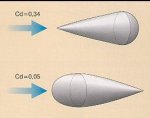RobbieW
Well-Known Member
and another just south of Hobart in Tasmania
http://www.discovertasmania.com.au/attraction/theshottower
Jonathan
edit: In fact they are common place, well almost, with another one in Melbourne
https://en.wikipedia.org/wiki/Coop's_Shot_Tower
close edit
One in Chester too, https://en.wikipedia.org/wiki/Chester_Shot_Tower, currently being incorporated into a residential complex - handy for the residents when they need to recharge thier muskets

